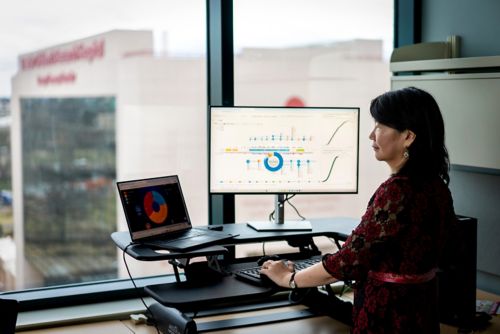St. Jude Family of Websites
Explore our cutting edge research, world-class patient care, career opportunities and more.
St. Jude Children's Research Hospital Home

- Fundraising
St. Jude Family of Websites
Explore our cutting edge research, world-class patient care, career opportunities and more.
St. Jude Children's Research Hospital Home

- Fundraising
Expedited and accurate detection of targeted gene fusions with St. Jude Fuzzion2
Using genomic sequencing to detect critical gene fusions in clinical pediatric oncology has led to advancements in molecular diagnostics and targeted treatment. However, the speed and accuracy with which these analyses can be performed in the clinic have remained an area of continued innovation. To identify gene fusions in pediatric cancer faster and with more accuracy, Jinghui Zhang, PhD, Department of Computational Biology, and her team developed a gene fusion pattern-matching program called Fuzzion2.

Jinghui Zhang, PhD, St. Jude Department of Computational Biology, and her team developed a pattern-matching program, called Fuzzion2, to accelerate the accurate detection of targeted gene fusions in pediatric cancer patients.
The program, published in Cell Reports Methods, was developed using 21,736 reference patterns that represent genomic abnormalities called chimeric fusions or internal tandem duplications — important oncologic biomarkers. Fuzzion2 detects gene fusions by using fuzzy pattern matching and frequency minimizers, techniques that can analyze an unmapped RNA-sequencing (RNA-seq) sample in minutes with an accuracy that exceeds current methods.
“The Fuzzion2 software breaks new ground in gene-fusion detection in terms of speed and sensitivity. Gene fusions that cause cancer are detected quickly, even when the evidence for them is scant,” said first and co-corresponding author Stephen V. Rice, PhD, Department of Computational Biology.
“Development of Fuzzion2 was inspired by the fast turnaround time and high sensitivity required for clinical testing,” said Zhang. “We were also able to leverage its high performance to map out the fusion landscapes of more than 13,000 pediatric and adult cancers, which can inform future research.”